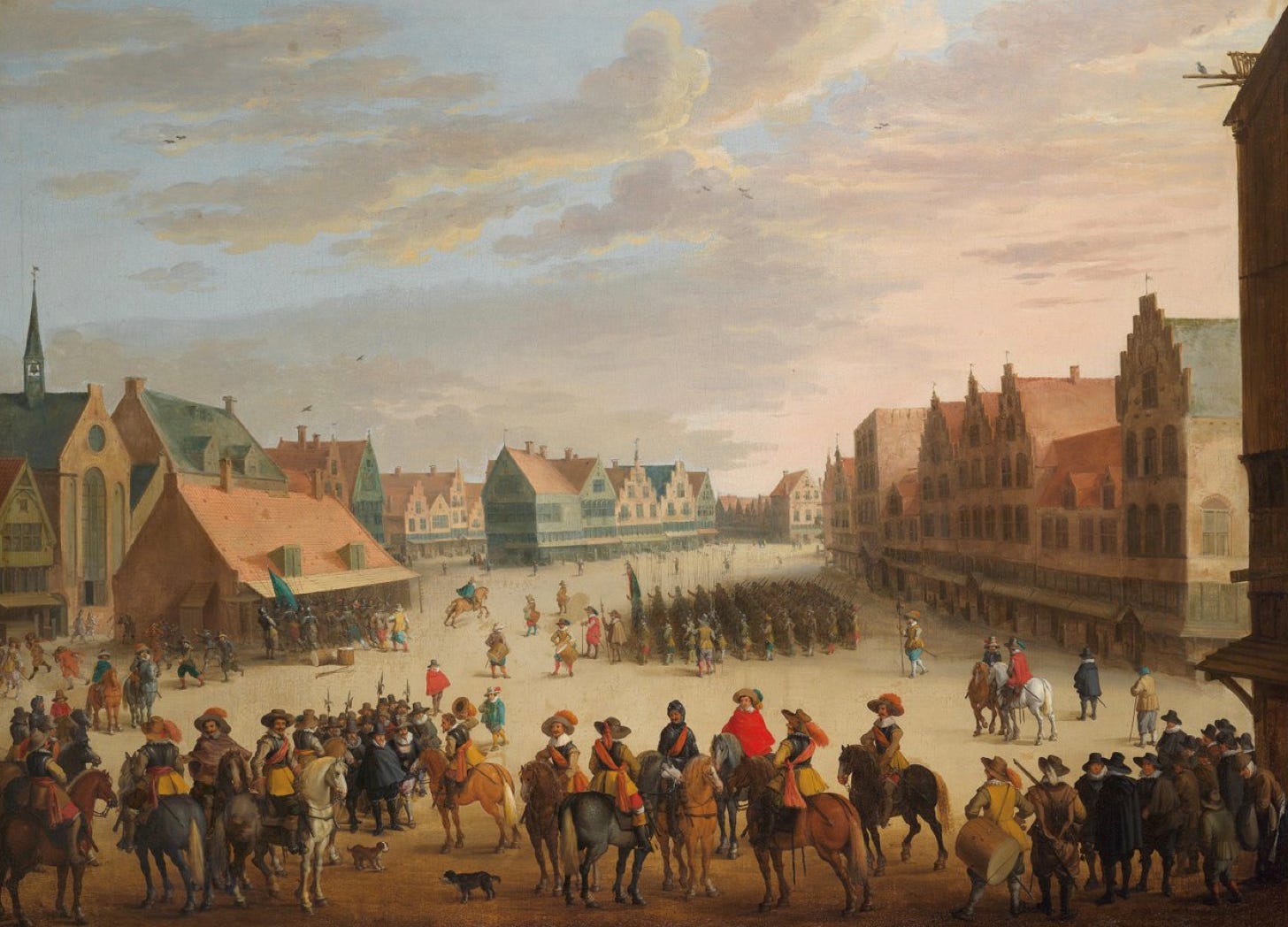Picturing the Regulars
Illustrating the Birth of Modern Warfare (1590-1621)
Recently, while preparing materials for a decision-forcing case, I revisited the radical reforms imposed upon the land forces of the United Netherlands by Maurice of Nassau. In particular, I employed the magnum opus of Hans Delbrück1 as a launch-pad for explorations of seven major elements of that revolution:
strict regularity of pay
a high ratio of leaders to common soldiers
the insistance that soldiers (rather than laborers) build their own earthworks
the revival of close-order drill
the replacement of deep columns with much shallower formations
the dismissal of mercenaries
summary punishment for robbery and theft
In keeping with the principle of ‘start with full-color illustrations’, I quickly discovered that painters of the period produced lots of homely tableaux of soldiers enjoying their off-duty time, but few (if any) pictures of the paydays that powered such relaxation.
Similarly, I learned that, while engravers cut many depictions of the ‘school of the soldier’ and armies arrayed for the fray, they rarely, if ever, showcased the service of sergeants, corporals, and capitaines d'armes.2
To put things another way, I have yet to find pictures made in the years of the Mauritian reforms (1590-1621), or soon thereafter, comparable to the ‘cigarette card’ pictures of the early twentieth century. (For examples of paintings of this sort, see the pictures that I used to illustrate the series on the re-organization of British infantry battalions on the eve of the First World War or those painted by Carl Röchling, in 1890 or so, for his book on barracks life in the German Empire.)
The moral I draw from this comparison goeth thusly.3 Being human, we prefer stories wrought in light to tales told in text. This, in turn, leads us to devalue aspects of an event that artists failed to capture. In the case of the reforms of Maurice of Nassau, this leads us to focus on the role played by drill while neglecting its complements: the punctual payment of salaries (which enabled leaders to demand attendance at long practice sessions), the presence of large numbers of non-commissioned officers (who supervised such exercises), the replacement of mercenary bands on short-term contracts (who didn’t drill) with units composed of long-service regulars, and a whole lot of spadework (which, hard as it might have been, provided some respite from long days on the drill field)
For Further Reading:
To Share, Subscribe, or Support:
I consulted both Geschichte der Kriegskunst im Rahmen der politischen Geschichte, Vierter Teil, Neuzeit [The History of the Art of War within within the Framework of Political History, Part 4: Modernity ](Berlin: Georg Stilke, 1920) and the translation of that text by Walter J. Renfroe, Jr., which was published as The Dawn of Modern Warfare: Volume IV of the History of the Art of War (Lincoln: University of Nebraska Press, 1985).
The capitaine d’armes kept track of the weapons and ammunition belonging to a company. Anonymous Die geöfnete Festung [The Open Fortress] (Hamburg: Benjamin Schiller, 1700) pages 86-87
I tip my hat to Jill Bearup, who, when not pretending to poke people with pointy things, makes good use of this pseudo-Shakespearean expression.










Once again, superb comments and insights. Bravo.
Yes indeed.